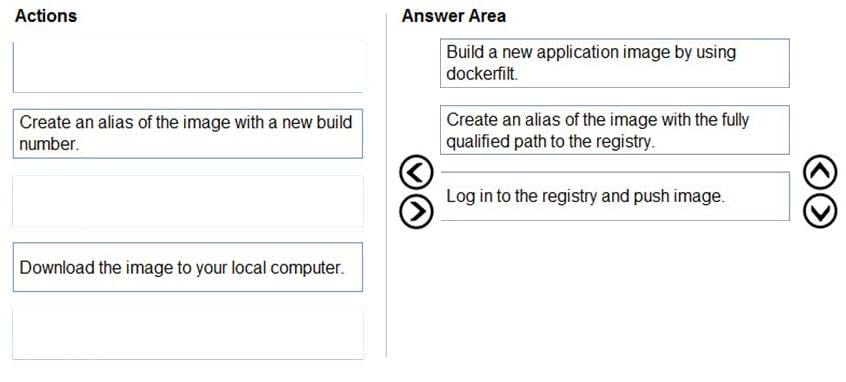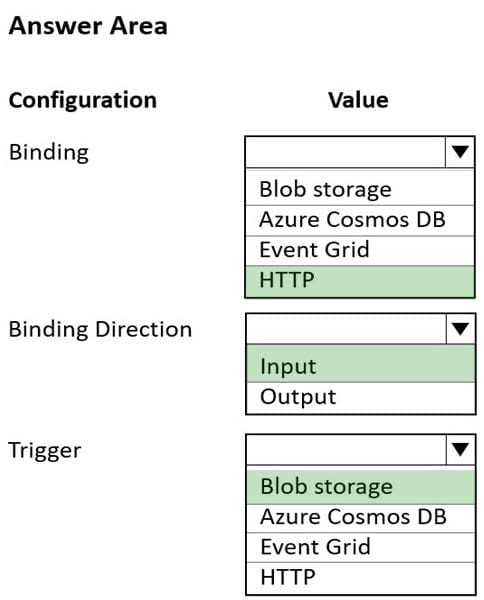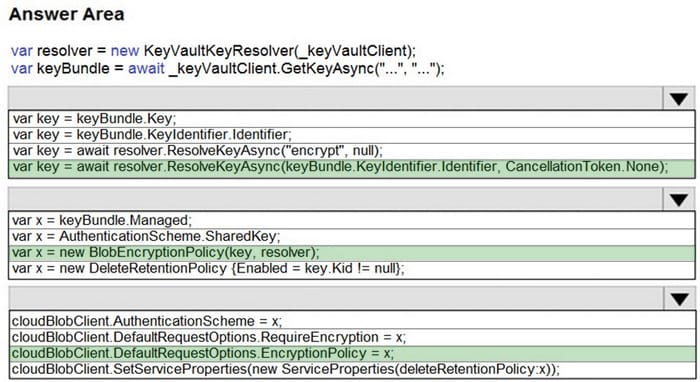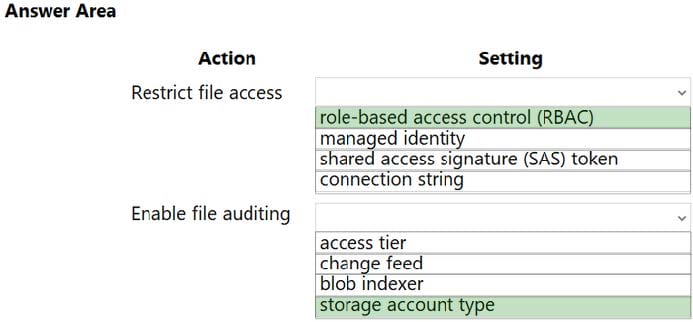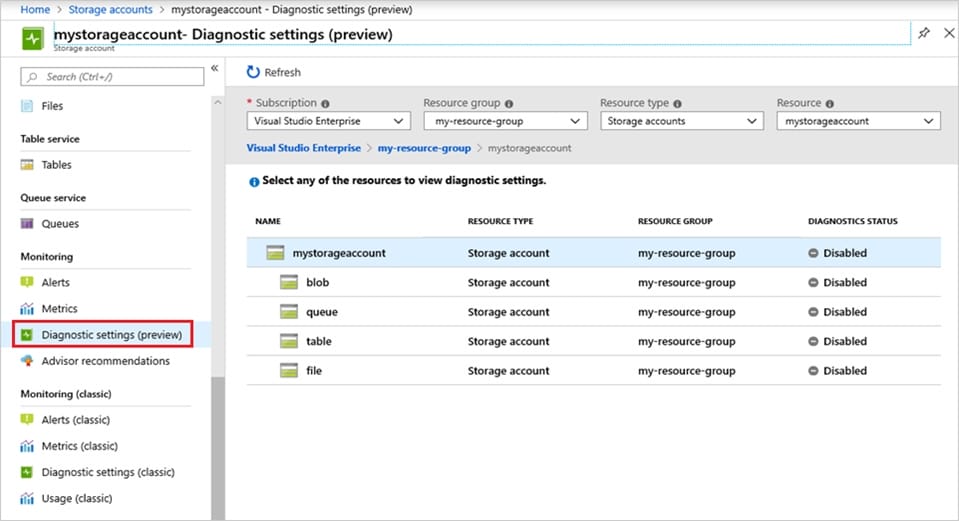Exam Details
Exam Code
:AZ-204Exam Name
:Developing Solutions for Microsoft AzureCertification
:Microsoft CertificationsVendor
:MicrosoftTotal Questions
:532 Q&AsLast Updated
:Jul 11, 2025
Microsoft Microsoft Certifications AZ-204 Questions & Answers
-
Question 51:
You develop a solution that uses Azure Virtual Machines (VMs).
The VMs contain code that must access resources in an Azure resource group. You grant the VM access to the resource group in Resource Manager.
You need to obtain an access token that uses the VM's system-assigned managed identity.
Which two actions should you perform? Each correct answer presents part of the solution.
A. From the code on the VM, call Azure Resource Manager using an access token.
B. Use PowerShell on a remote machine to make a request to the local managed identity for Azure resources endpoint.
C. Use PowerShell on the VM to make a request to the local managed identity for Azure resources endpoint.
D. From the code on the VM, call Azure Resource Manager using a SAS token.
E. From the code on the VM, generate a user delegation SAS token.
-
Question 52:
You are developing several microservices to run on Azure Container Apps. External HTTP ingress traffic has been enabled for the microservices.
The microservices must be deployed to the same virtual network and write logs to the same Log Analytics workspace.
You need to deploy the microservices.
What should you do?
A. Enable single revision mode.
B. Use a separate environment for each container.
C. Use a private container registry image and single image for all containers.
D. Use a single environment for all containers.
E. Enable multiple revision mode.
-
Question 53:
You are developing an inventory tracking solution. The solution includes an Azure Function app containing multiple functions triggered by Azure Cosmos DB. You plan to deploy the solution to multiple Azure regions.
The solution must meet the following requirements:
Item results from Azure Cosmos DS must return the most recent committed version of an item.
Items written to Azure Cosmos DB must provide ordering guarantees.
You need to configure the consistency level for the Azure Cosmos DB deployments.
Which consistency level should you use?
A. consistent prefix
B. eventual
C. bounded staleness
D. strong
E. session
-
Question 54:
You create and publish a new Azure App Service web app.
User authentication and authorization must use Azure Active Directory (Azure AD).
You need to configure authentication and authorization.
What should you do first?
A. Add an identity provider.
B. Map an existing custom DNS name.
C. Create and configure a new app setting.
D. Add a private certificate.
E. Create and configure a managed identity.
-
Question 55:
DRAG DROP
You need to deploy a new version of the LabelMaker application to ACR.
Which three actions should you perform in sequence? To answer, move the appropriate actions from the list of actions to the answer area and arrange them in the correct order.
Select and Place:
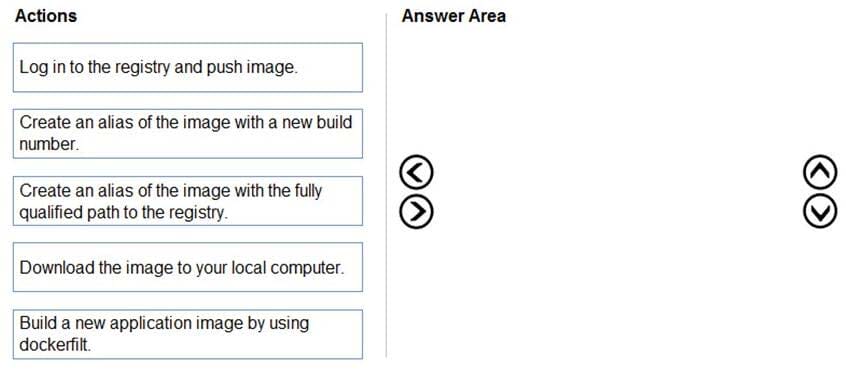
-
Question 56:
HOTSPOT
You need to implement the retail store location Azure Function.
How should you configure the solution? To answer, select the appropriate options in the answer area.
NOTE: Each correct selection is worth one point.
Hot Area:
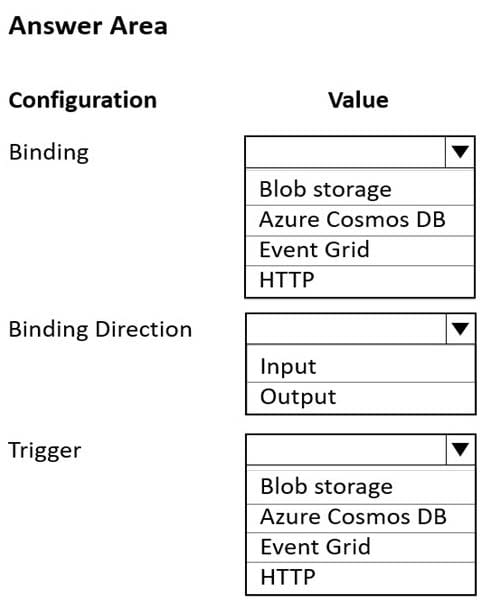
-
Question 57:
HOTSPOT
You need to implement the Log policy.
How should you complete the EnsureLogging method in EventGridController.cs? To answer, select the appropriate options in the answer area.
NOTE: Each correct selection is worth one point.
Hot Area:
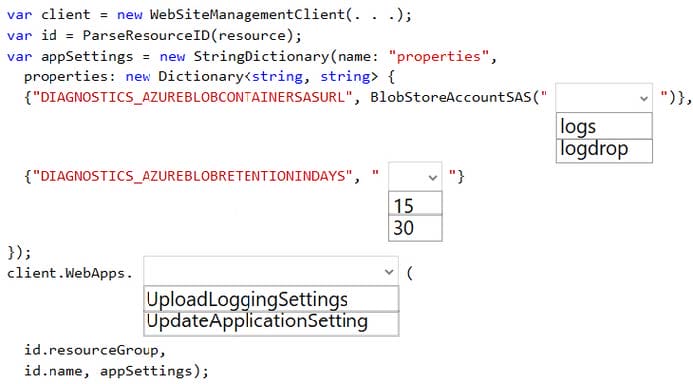
-
Question 58:
HOTSPOT
You need to add code at line PC26 of Processing.cs to ensure that security policies are met.
How should you complete the code that you will add at line PC26? To answer, select the appropriate options in the answer area.
NOTE: Each correct selection is worth one point.
Hot Area:

-
Question 59:
HOTSPOT
You need to insert code at line LE03 of LoginEvent.cs to ensure that all authentication events are processed correctly.
How should you complete the code? To answer, select the appropriate options in the answer area.
NOTE: Each correct selection is worth one point.
Hot Area:
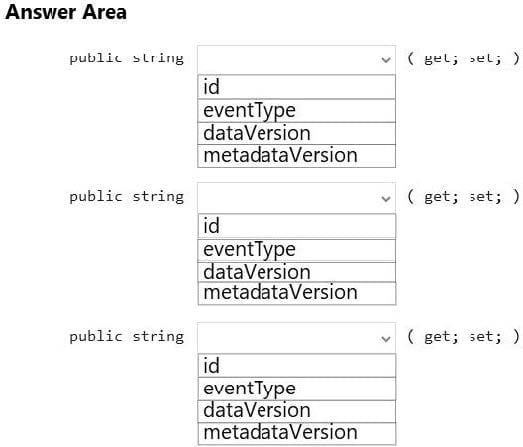
-
Question 60:
HOTSPOT
You need to configure security and compliance for the corporate website files.
Which Azure Blob storage settings should you use? To answer, select the appropriate options in the answer area.
NOTE: Each correct selection is worth one point.
Hot Area:
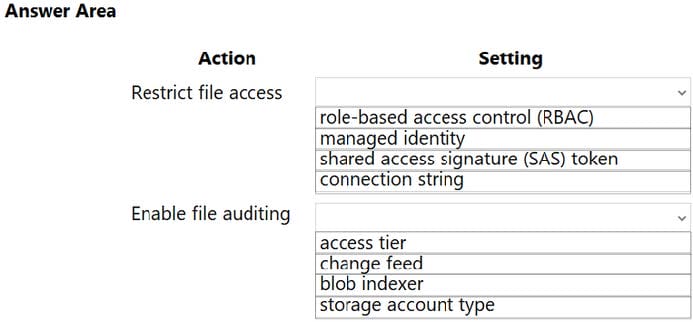
Related Exams:
62-193
Technology Literacy for Educators70-243
Administering and Deploying System Center 2012 Configuration Manager70-355
Universal Windows Platform – App Data, Services, and Coding Patterns77-420
Excel 201377-427
Excel 2013 Expert Part One77-725
Word 2016 Core Document Creation, Collaboration and Communication77-726
Word 2016 Expert Creating Documents for Effective Communication77-727
Excel 2016 Core Data Analysis, Manipulation, and Presentation77-728
Excel 2016 Expert: Interpreting Data for Insights77-731
Outlook 2016 Core Communication, Collaboration and Email Skills
Tips on How to Prepare for the Exams
Nowadays, the certification exams become more and more important and required by more and more enterprises when applying for a job. But how to prepare for the exam effectively? How to prepare for the exam in a short time with less efforts? How to get a ideal result and how to find the most reliable resources? Here on Vcedump.com, you will find all the answers. Vcedump.com provide not only Microsoft exam questions, answers and explanations but also complete assistance on your exam preparation and certification application. If you are confused on your AZ-204 exam preparations and Microsoft certification application, do not hesitate to visit our Vcedump.com to find your solutions here.
